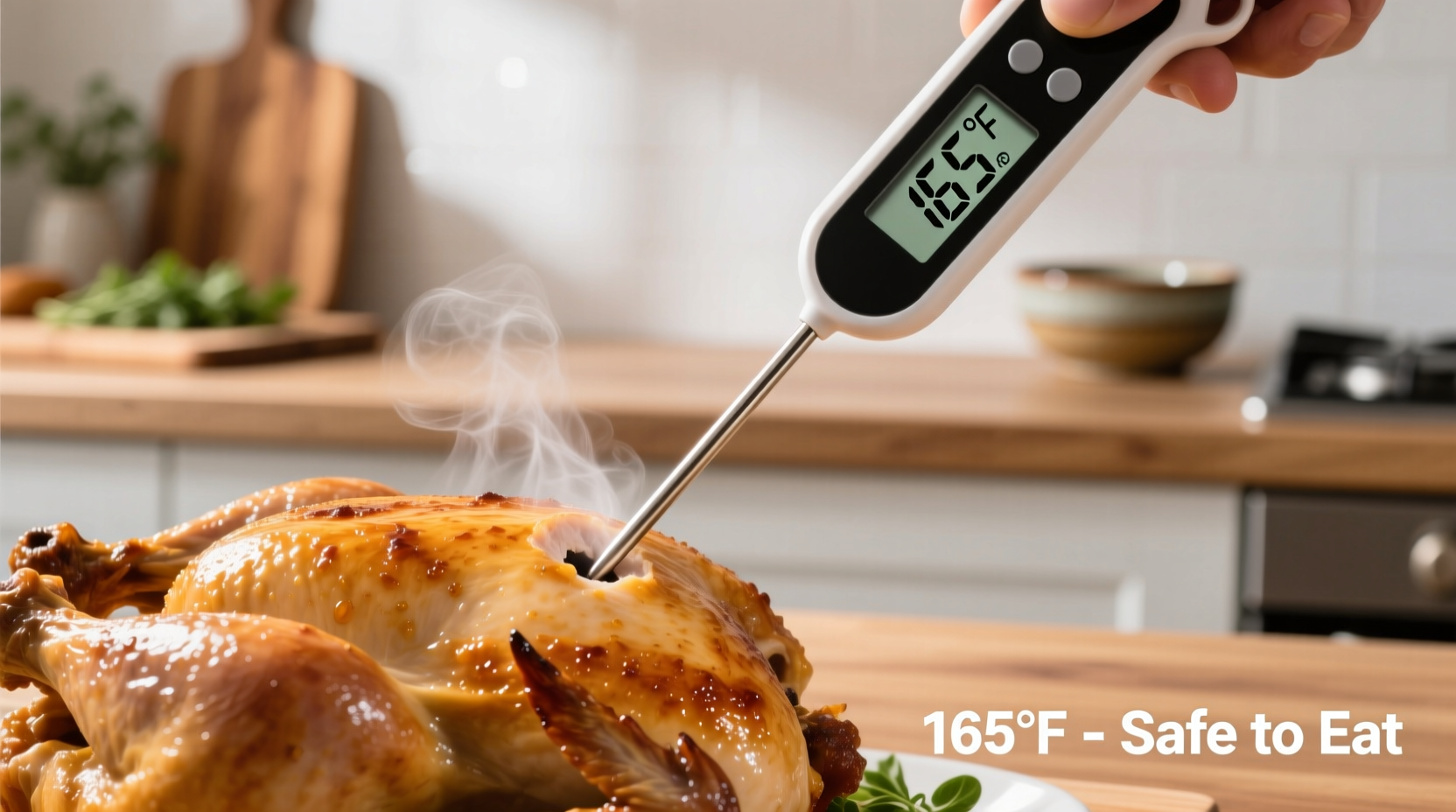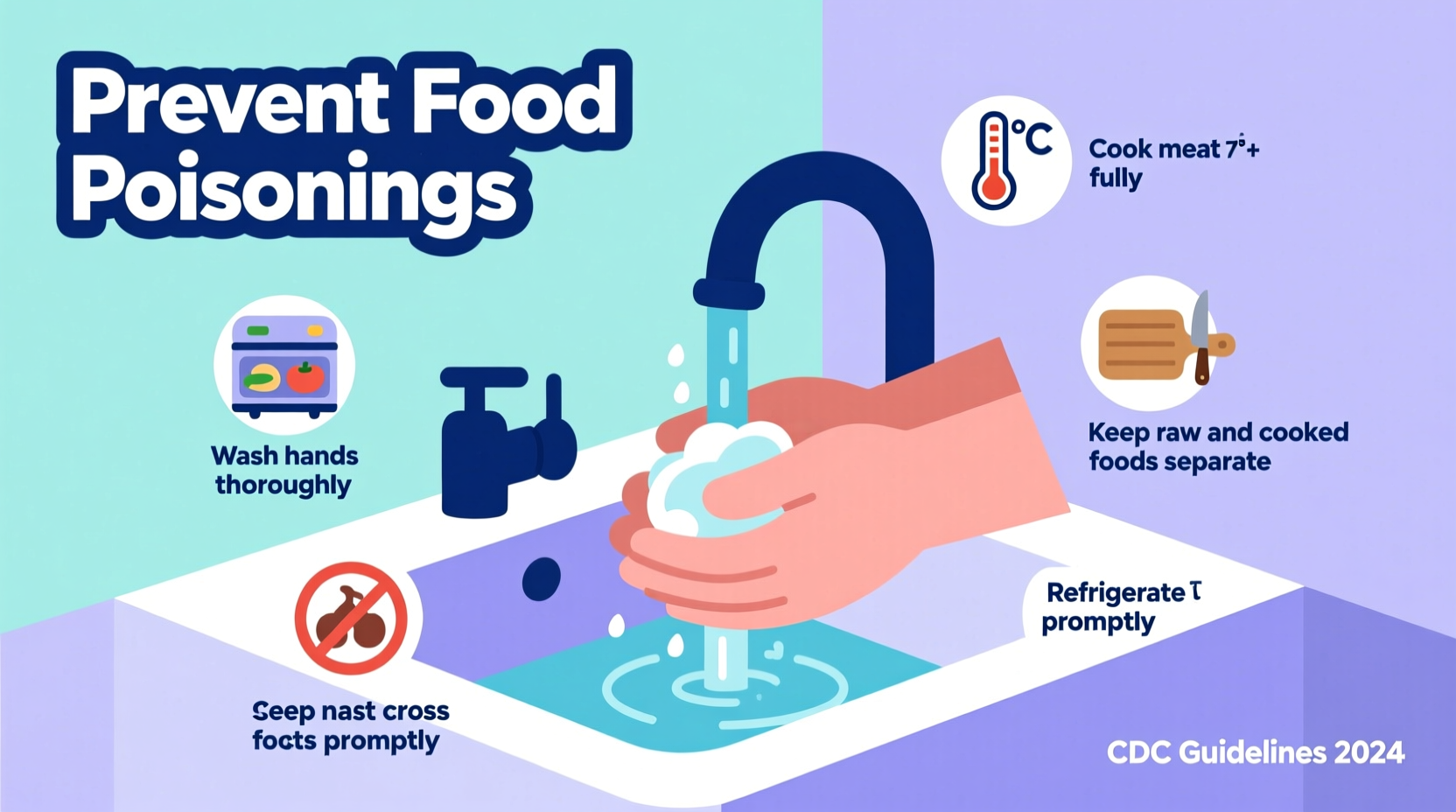Stop food poisoning before it starts by following these critical steps: wash hands thoroughly before handling food, keep raw meats separate from ready-to-eat items, cook foods to proper internal temperatures (165°F for poultry, 145°F for fish), and refrigerate leftovers within two hours. These evidence-based food safety practices prevent 90% of common foodborne illnesses according to CDC data.
Food poisoning affects 1 in 6 Americans annually, causing over 128,000 hospitalizations. While uncomfortable symptoms might seem inevitable, most cases are completely preventable with proper food handling techniques. Understanding the science behind foodborne pathogens empowers you to protect yourself and your family through simple, actionable steps.
Understanding Food Poisoning Causes
Food poisoning occurs when you consume contaminated food containing bacteria, viruses, parasites, or toxins. The most common culprits include Salmonella, E. coli, Listeria, and norovirus. These pathogens thrive in specific conditions known as the "danger zone"—temperatures between 40°F and 140°F where bacteria multiply rapidly.
| Common Pathogen | Primary Food Sources | Incubation Period |
|---|---|---|
| Salmonella | Raw eggs, poultry, unpasteurized milk | 6-72 hours |
| E. coli | Undercooked ground beef, leafy greens | 1-10 days |
| Listeria | Deli meats, soft cheeses, refrigerated smoked seafood | Up to 70 days |
| Norovirus | Ready-to-eat foods handled by infected person | 12-48 hours |
Your Complete Food Poisoning Prevention Framework
Safe Food Shopping Practices
Prevention begins at the grocery store. Keep raw meats in separate bags from produce and ready-to-eat items to prevent cross-contamination. According to FDA guidelines, purchase perishable items last during your shopping trip and get them refrigerated within two hours (one hour if temperatures exceed 90°F). Check expiration dates carefully and avoid damaged packaging that could indicate potential contamination.
Proper Food Storage Techniques
Refrigerate perishable foods promptly at 40°F or below. Store raw meats on the bottom shelf to prevent drips onto other foods. Use the "first in, first out" method to ensure older items get used before newer purchases. The USDA recommends these maximum storage times for common foods:
- Raw poultry: 1-2 days in refrigerator
- Raw ground meats: 1-2 days in refrigerator
- Leftovers: 3-4 days in refrigerator
- Cut fruits and vegetables: 3-5 days in refrigerator
For freezer storage, maintain temperatures at 0°F or below. While frozen foods remain safe indefinitely, quality deteriorates over time. Label all frozen items with dates to track storage duration.
Effective Cross-Contamination Prevention
Cross-contamination causes nearly 50% of foodborne illness cases. Implement these critical barriers:
- Use separate cutting boards for raw meats and produce (color-coded boards help)
- Wash hands with soap and warm water for 20 seconds before and after handling food
- Clean countertops and utensils with hot, soapy water after contact with raw foods
- Never place cooked food back on surfaces that held raw ingredients
Research from the Journal of Food Protection shows that proper handwashing technique reduces transmission risk by 70%. Make sure to scrub between fingers, under nails, and up to wrists.
Precise Cooking Temperatures
Using a food thermometer is the only reliable way to ensure food safety. Visual cues like color changes can be misleading. The FDA Food Code specifies these minimum internal temperatures:
- Poultry (whole or ground): 165°F
- Ground meats (beef, pork, veal, lamb): 160°F
- Seafood: 145°F or until flesh is opaque
- Beef, pork, veal, lamb steaks/roasts: 145°F with 3-minute rest time
- Leftovers and casseroles: 165°F
Remember that microwave cooking often creates uneven heating. Stir foods midway through cooking and check multiple spots with your thermometer.
Safe Food Handling During Events
Buffets and outdoor gatherings present unique challenges. Keep hot foods above 140°F using chafing dishes or slow cookers, and maintain cold foods below 40°F with ice baths. Discard perishable foods left at room temperature for more than two hours (one hour above 90°F). The CDC reports that improper temperature control causes 36% of foodborne illness outbreaks at events.
When Prevention Fails: Immediate Response Steps
If you suspect food poisoning, focus on hydration with clear fluids like water, broth, or oral rehydration solutions. Avoid anti-diarrheal medications initially as they can prolong infection by preventing your body from eliminating pathogens. Rest and allow your digestive system to recover. Most mild cases resolve within 1-3 days with proper hydration.
Recognizing Dangerous Symptoms
Seek immediate medical attention if you experience:
- Signs of severe dehydration (dizziness, reduced urination, dry mouth)
- Blood in vomit or stool
- High fever (over 101.5°F)
- Symptoms lasting more than 3 days
- Numbness, tingling, or muscle weakness
Vulnerable populations including young children, elderly adults, pregnant women, and immunocompromised individuals should consult healthcare providers at the first sign of foodborne illness.

Contextual Food Safety Considerations
Food safety practices must adapt to specific situations. When traveling internationally, follow the rule: "Boil it, cook it, peel it, or forget it." High-altitude cooking requires temperature adjustments as water boils at lower temperatures. During power outages, keep refrigerator doors closed—food remains safe for about 4 hours if unopened. For home canning, strictly follow tested recipes from the National Center for Home Food Preservation to prevent botulism risk.
Understanding these context boundaries prevents overgeneralization of food safety rules. What works for backyard barbecues might not apply to meal prep for immunocompromised individuals, who require additional precautions like avoiding raw sprouts and deli meats.











 浙公网安备
33010002000092号
浙公网安备
33010002000092号 浙B2-20120091-4
浙B2-20120091-4